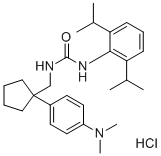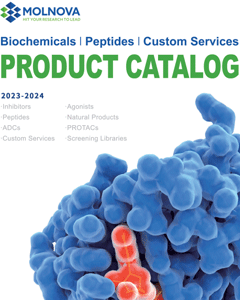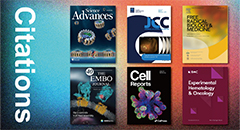
ATR-101
CAS No. 133825-81-7
ATR-101( PD-132301 | PD132301-2 | ATR 101 | Nevanimibe )
Catalog No. M11357 CAS No. 133825-81-7
ATR-101 (PD-132301, Nevanimibe) is a selective and potent inhibitor of ACAT1 with IC50 of 52 nM.
Purity : >98% (HPLC)
 COA
COA
 Datasheet
Datasheet
 HNMR
HNMR
 HPLC
HPLC
 MSDS
MSDS
 Handing Instructions
Handing Instructions
| Size | Price / USD | Stock | Quantity |
| 5MG | 192 | In Stock |


|
| 10MG | 267 | In Stock |


|
| 25MG | 417 | In Stock |


|
| 50MG | 533 | In Stock |


|
| 100MG | 708 | In Stock |


|
| 200MG | Get Quote | In Stock |


|
| 500MG | Get Quote | In Stock |


|
| 1G | Get Quote | In Stock |


|
Biological Information
-
Product NameATR-101
-
NoteResearch use only, not for human use.
-
Brief DescriptionATR-101 (PD-132301, Nevanimibe) is a selective and potent inhibitor of ACAT1 with IC50 of 52 nM.
-
DescriptionATR-101 (PD-132301, Nevanimibe) is a selective and potent inhibitor of ACAT1 with IC50 of 52 nM; induces H295R cell apoptosis, causes mitochondrial hyperpolarization, reactive oxygen release, and ATP depletion, caspase-3/7 activation, and membrane permeabilization; decreases the formation of cholesteryl esters and increases FC levels in H295R adrenocortical carcinoma cells; inhibits the establishment and impeds the growth of ACC-derived H295R cell xenografts in mice; orally active.Cushing Disease Phase 2 Clinical(In Vitro):Coincubation of Nevanimibe hydrochloride (PD-132301 hydrochloride; ATR101 hydrochloride; 3 nM-30 μM) and Cholesterol markedly increases toxicity in a dose-dependent manner, where 3 nM Nevanimibe in the presence of 60 μg/mL Cholesterol reduces survival by 60% after 24 hours. All doses of Nevanimibe (3 nM-30 μM) induces cytoxicity in the presence of Cholesterol, whereas treatment with Cholesterol in the absence of Nevanimibe has no effect on cell viability.
-
In VitroCell Cytotoxicity Assay Cell Line:The H295R and HAC clone 15 (HAC15) human ACC cell lines Concentration:3 nM-30 μM Incubation Time:24 hours Result:3 nM-3 μM exhibited no toxicity, whereas 30 μM treatment reduced survival by approximately 40% within 24 hours.
-
In Vivo——
-
SynonymsPD-132301 | PD132301-2 | ATR 101 | Nevanimibe
-
PathwayOthers
-
TargetOther Targets
-
RecptorOther Targets
-
Research AreaEndocrinology
-
IndicationCushing Disease
Chemical Information
-
CAS Number133825-81-7
-
Formula Weight458.09
-
Molecular FormulaC27H40ClN3O
-
Purity>98% (HPLC)
-
SolubilityDMSO : 41.67 mg/mL. 90.97 mM
-
SMILESCC(C)C1=C(C(=CC=C1)C(C)C)NC(=O)NCC2(CCCC2)C3=CC=C(C=C3)N(C)C.Cl
-
Chemical Name1-(2,6-diisopropylphenyl)-3-((1-(4-(dimethylamino)phenyl)cyclopentyl)methyl)urea hydrochloride
Shipping & Storage Information
-
Storage(-20℃)
-
ShippingWith Ice Pack
-
Stability≥ 2 years
Reference
1. LaPensee CR, et al. Endocrinology. 2016 May;157(5):1775-88.
2. Trivedi BK, et al. J Med Chem. 1994 May 27;37(11):1652-9.
3. Cheng Y, et al. Endocr Relat Cancer. 2016 Apr;23(4):1-19.
molnova catalog



related products
-
Carbocisteine
Carbocysteine is a compound formed when the iodoacetic acid reacts with sulfhydryl groups in proteins. It has been used as an anti-infective nasal spray with mucolytic and expectorant action.
-
Eucomic acid
Eucomic acid showed the best inhibitory activity against the P. falciparum 3D7, a well-known chloroquine-sensitive strain.
-
Eprodisate disodium
Eprodisate Disodium is the orally available disodium salt form of Eprodisate, a negatively charged sulfonated inhibitor of fibrillogenesis, that can be used in the treatment of amyloid A (AA) amyloidosis.



 Cart
Cart
 sales@molnova.com
sales@molnova.com


